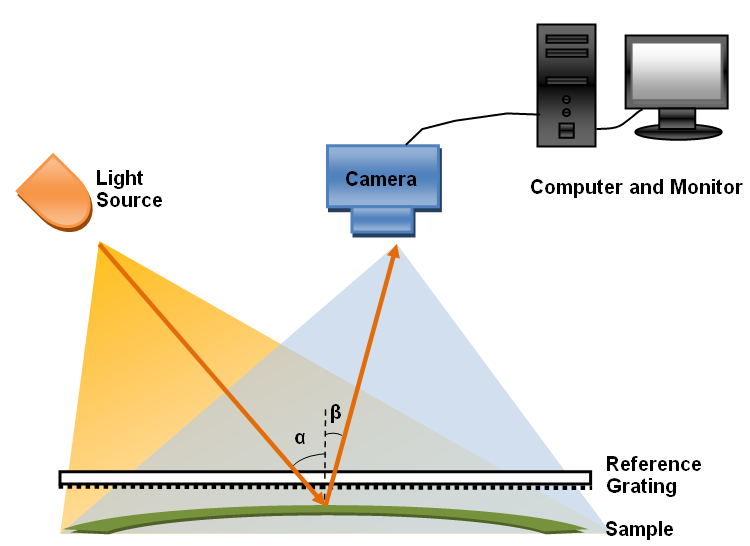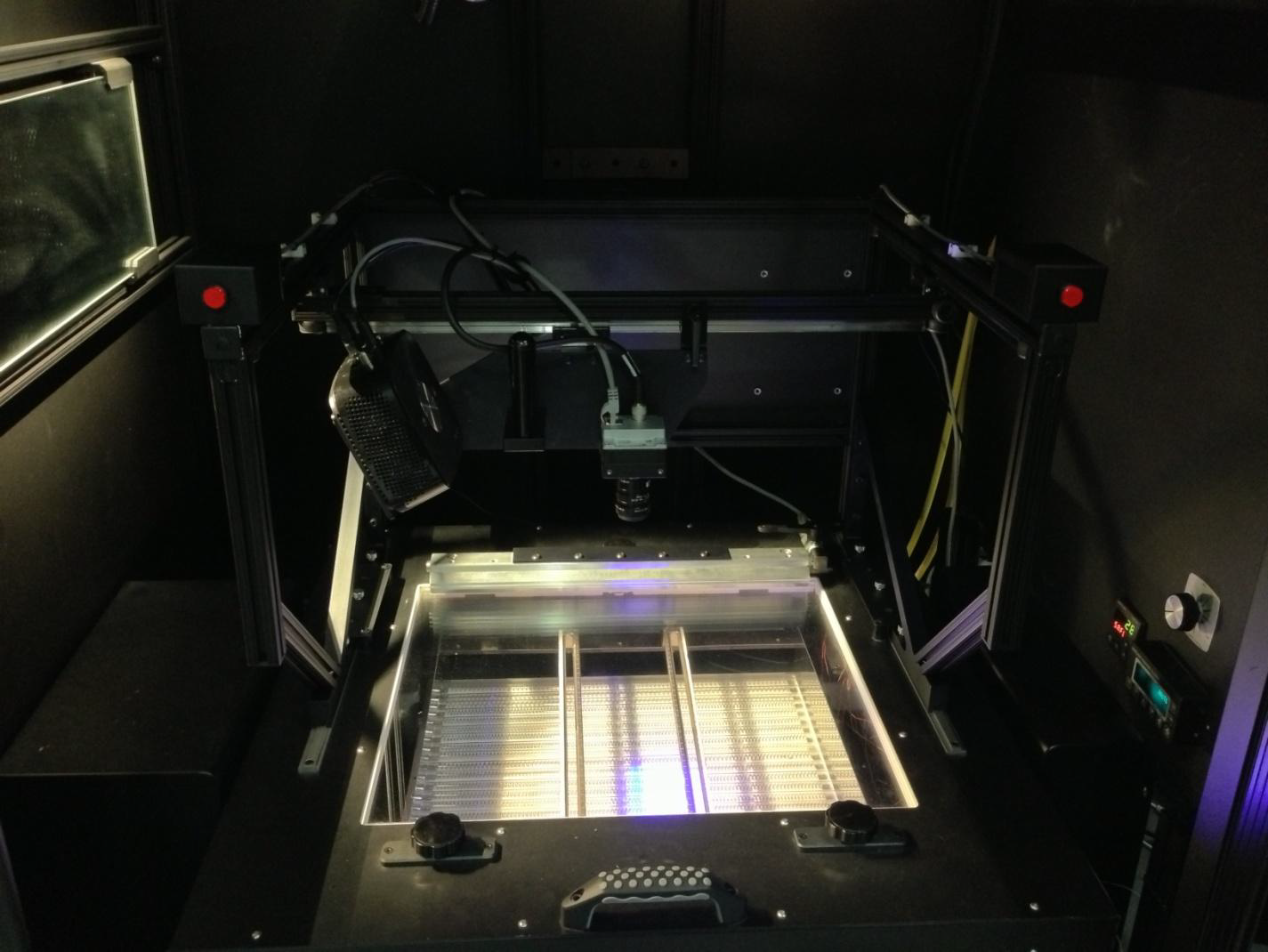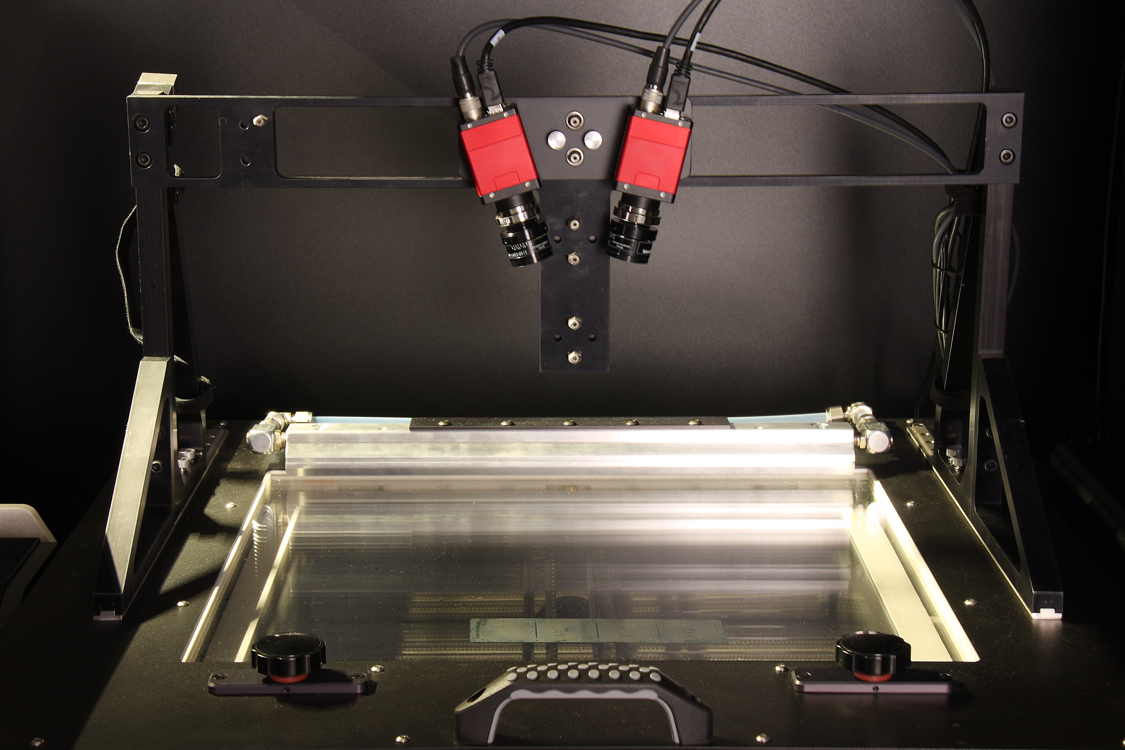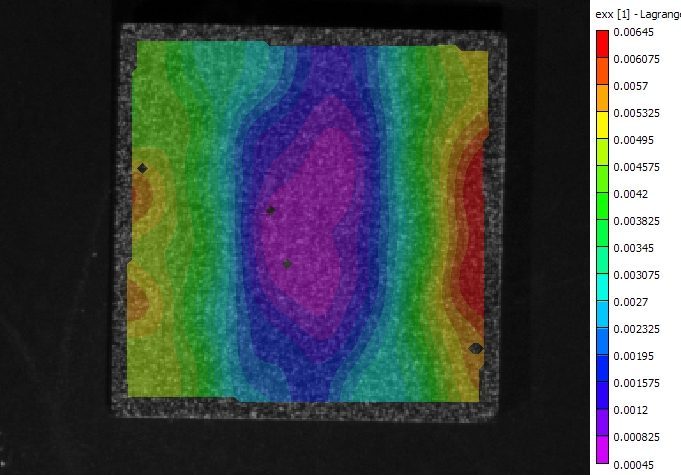Flatness Measurement and Analysis Technique
The Digital Fringe Projection (DFP) technique compliments the shadow moiré technique by adding step height measurement capabilities at high data point density. This technique is particularly useful for measurement of connectors, sockets, assembled modules, and PCB local areas.
No grating is needed for the DFP technique, which helps with issues like outgassing and temperature uniformity sometimes seen with the shadow moiré technique. DFP also has the advantage of not being limited by data density, unlike the shadow moiré technique.
DFP has the disadvantage of warpage resolution being dependent on field of view. For this technique a field of view of 64x48mm, generating a measurement resolution of 5 microns, was chosen.
The strengths of the DFP measurement technique include:
- Full field data acquired in less than 2 seconds
- Able to measure sudden and large height changes up to nearly 20mm
- High data point density
The DFP technique is offered as:
- A DFP module on the AXP system
- The base technology for the CXP system
In-plane strain and CTE measurement Technique
Digital Image Correlation (DIC) is a non-contact, full-field optical technique for measuring both in-plane and out-of-plane displacements of an object surface. A high contrast, random speckle pattern is applied to the surface of interest. Two cameras are mounted above the oven, viewing the sample from different angles.
Two simultaneous images from both cameras are digitized. Software identifies the same point on the surface from both perspectives, using pattern recognition of the speckles within a small pixel window. Using the principle of stereo triangulation, the spatial position of the pixel window relative to the cameras is determined in 3D space. Stepping the pixel window across the sample, the displacement of the surface can be mapped out in 3 axes.
The strengths of the DIC measurement technique include:
- In-plane strain measurement at <150 microstrain
- Calculate average surface CTE from strain and temperature data
The DIC technique is offered in the form of the DIC 2.0 module on the following Akrometrix tools:
- AXP
- PS200S
Flatness Measurement and Analysis Technique
Shadow Moiré is a non-contact, full-field optical technique that uses geometric interference between a reference grating and its shadow on a sample to measure relative vertical displacement at each pixel position in the resulting image. It requires a Ronchi-ruled grating, a white line light source at approximately 45 degrees to the grating and a camera perpendicular to the grating. Its optical configuration is shown in the figure to the right. A technique, known as phase stepping, is applied to shadow moiré to increase measurement resolution and provide automatic ordering of the interference fringes. This technique is implemented by vertically translating the sample relative to the grating
The strengths of the shadow moiré measurement technique include:
- Full field data acquired in less than 2 seconds
- Resolution down to <1 micron
- Resolution is unchanged by field of view
- Highly robust with minimal moving parts
The shadow moiré technique is offered on the following Akrometrix tools:
- AXP
- PS200S
- PS600S
- AKM600P






